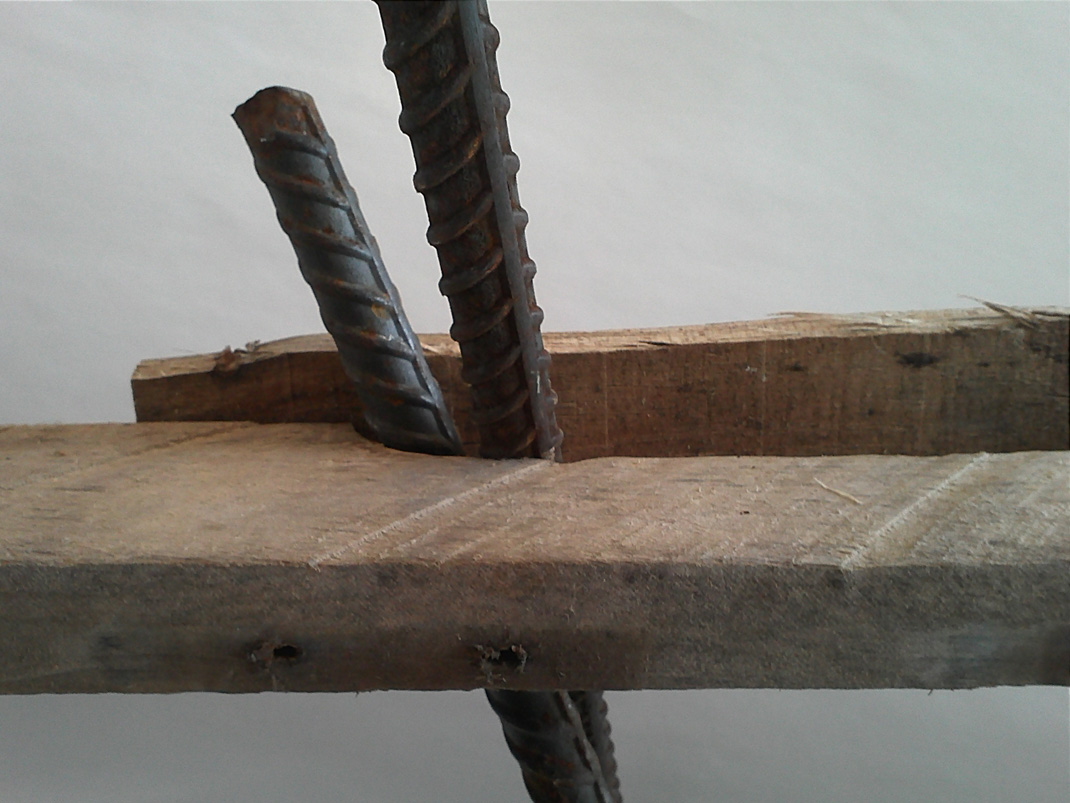For my second project my goal is to produce something that will hold a human body. Now, this is obviously not the finished product. I needed to see if the idea I had in mind for using the ridges of the re-bar as grips for the woods to grab onto would work. As you can, it does. Surprisingly so in fact. The quickly tacked bit of scrap wood was the only thing that was preventing me from placing my full body weight on this quick mock-up. The first mock up required an elongated seat pan to generate enough torque to grip the re-bar on its own. This second iteration utilizes two sets of rebar to work against each other, not only providing enough points of contact to keep from toppling over but they actually hold the seat pan suspended above the ground.
I was concerned about the orientation of the re-bar ridges as they cut diagonally across the shaft of the rod. The resolution of this issue resulted not only in a solution to the originally issue but provided two additional refinements. By splaying the legs, re-bar out it orients the ridges parallel to the edge of the seat pan creating a tight fit. However, it provided the added benefit of increasing the stability of the seat, with the points of the legs being farther from each other, and also pushed the tops of the long re-bar opening up and opportunity to mount a back rest.
Issues to overcome are:
Tightening the pinching slot so the re-bar doesn't slide from side to side
Providing lateral stability possibly through the backrest and a tighter re-bar slot
Constructing a backrest
Losing the excess material on the outside of the seat pan past the re-bar
Strengthening the pinch connection in the wooden material
Consider multiple seating heights, chair vs. stool
 |
| Splayed legs for added stability. Notice the tops of the tall rods coming closer together opening the potential for a seat back. |
 |
| Pinch joint from the front. Notice the angled ribbing on the rebar matching the line of the seat pan due to the splaying of the legs. |
 |
| Testing the relative strength of the rebar-wood pinch. Notice the elongated seat pan required to generate enough torque to pinch the re-bar |
 |
| Use of blocking between two boards |
 |
| Considering notching |
 |
| Use of existing notching |






No comments:
Post a Comment